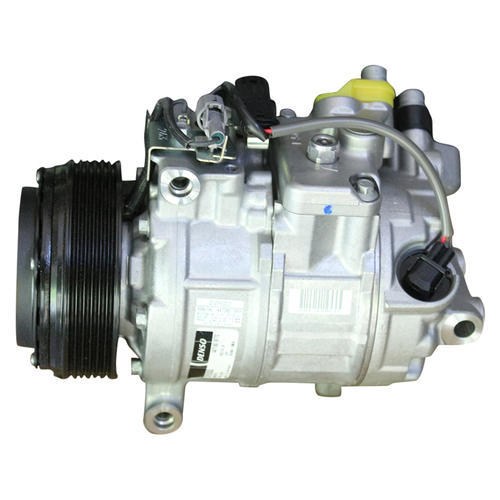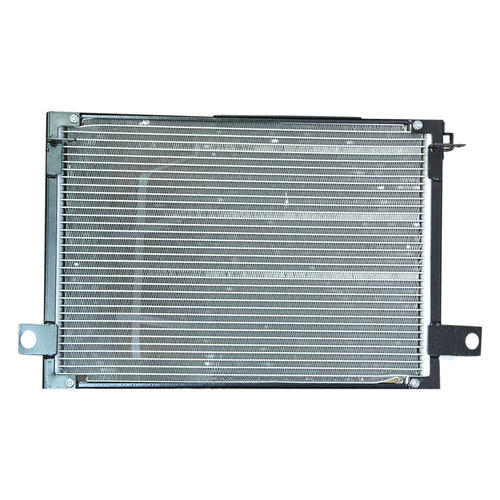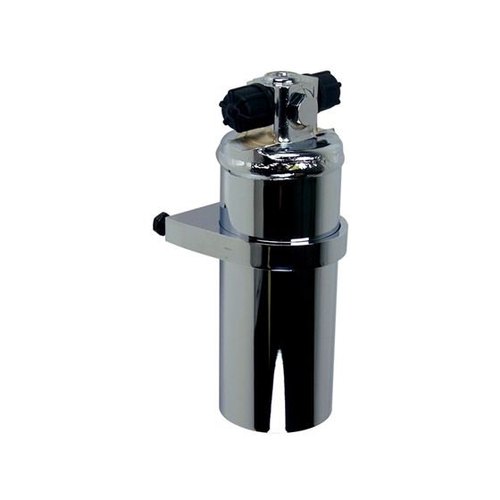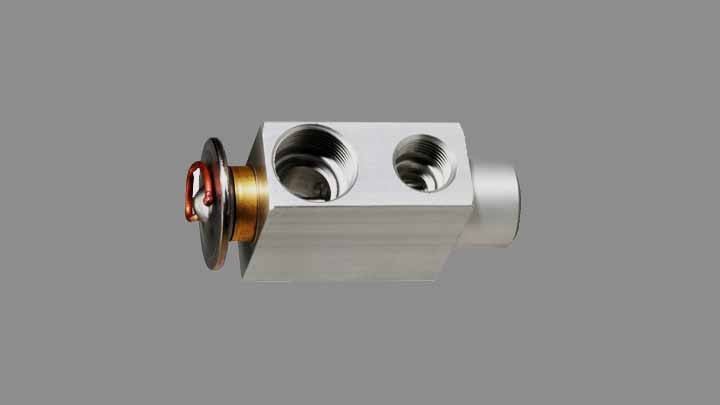The relation of AC and fuel economy seems like an easy enough connection. Turn AC and get less distance per litre of fuel. If only it were that easy. There are some cases where turning the AC is actually better than keeping the windows down. Didn’t expect that, did you? There might be more things that you don’t know about the relation between mileage and car AC that we’ll discuss below, so stick around and see how just pressing a small button on your dashboard makes the air that you share the car with comfortable to stay in.
How a Car AC works?
AC employs the use of a phenomenon which involves the use of pressure to change temperature. We will study this phenomenon further down the line while we study the overall working.
Car AC Parts
There are a lot of parts involved in making the air you share the car with comfortable. The parts needed are stated below.
- AC Compressor
- AC Condenser
- Receiver Dryer
- Expansion Valve
- Evaporator
All of those work in tandem to push a fluid called refrigerant changing its state of matter to achieve the goal. Before we begin how they perform such a task we need to understand how they are placed with respect to the car and each other.
Car AC Construction | How and Where they all fit
The AC compressor is the first part that makes the system work. It is situated close to the engine of the car and has a shaft coming into it from the engine. This shaft rotates the pulley in the engine allowing it to start working.
- Next comes the AC condenser which is situated in front of the car just like a radiator.
- Located after the condenser it is situated in the lower part of the car.
- On top of it, all is the Expansion valve as it needs to stay away from the next part which is the evaporator to get correct readings.
- The evaporator is present in the car closer to the passenger sometimes as close as the dashboard as it is the final part of the puzzle that is the AC in a car.
Car AC Working | How does it all come together
As we mentioned above it all starts with the engine. The engine is a necessary part of the car AC as it powers it all. The power provided is the input for the AC compressor making it run which is followed by the actions which are given below.
AC Compressor | Gas gains High Pressure and High Temperature

AC compressor as the name makes it obvious compresses the refrigerant which is a gas. This gas is compressed by increasing the pressure which in turns increases the temperature. How does the temperature increase if you change the pressure? It does so because of the energy needed to change increase the pressure is absorbed by the gas thus increasing its temperature. Another possible explanation is that by reducing the area but keeping the same quantity of gas (refrigerant) the less space causes more collisions within the gas thus increasing temperature.
AC Condensor | Liquid- High Pressure and Normal Temperature

The job of the condenser is to convert the gas that AC compressor provided it into liquid. It does so with the help of an AC fan which blows cool air into the condenser. It is to be noted that the condenser does nothing to pressure state. The cooling, however, has an effect on the gas converting it into a liquid which is at a normal temperature.
Receiver Drier | Liquid-High Pressure and Normal Temperature

This step doesn’t do anything to the refrigerant but to clean it. The Receiver dryer removes any contaminants from the system which can harm the system and cause it to fail. The liquid passes through after being cleaned. This contaminant is moisture and is cleaned by a product called a desiccant. It absorbs moisture if any present thus cleaning the refrigerant.
Expansion Valve | Liquid converts into Low Pressure and Low Temperature

The job of the expansion valve is to convert the high-pressure gas into a low-pressure one. It does so by limiting the flow of the gas making it pass through a small valve to the other side which becomes low pressure at it has more room and fewer molecules.
Now, this refrigerant is at the condition that we need it at and this triggers the final step of the Car AC system.
Must read: How to get the Maximum Cooling from your Car AC | Car AC tips & tricks
Evaporator | Liquid converts into Warm and Saturated Low-Pressure Gas

The principle of evaporation is that when the liquid evaporates into a gas it cools the surface it was on. Humans use this principle to cool down by sweating. The same is used by the AC to cool the air. When it expands rapidly the liquid refrigerant converts into a gaseous state. The gaseous state is still in the same temperature and pressure range which changes after it starts to boil as the refrigerant has a low boiling point (-23 degree Celcius). This is performed by a blower pushing air through the evaporator which causes the remaining liquid to evaporate thus cooling the air. This air is then pushed into your AC vents giving you cool and conditioned air.
The End of the line | Gas in Warm and Saturated Low-Pressure Condition loops back
The gas goes back into the AC compressor and the cycle continues till the AC is turned on.
Working | Conclusion
As the working of an AC system is affected by the engine directly it would mean that a direct relationship between fuel economy and AC run time is established as the engine directly runs the AC compressor. While that is true there are some cases where having AC turned on is better than keeping windows open which we will discuss below now that you know how the AC works.
Opening the Windows vs Using the AC
I’m sure you might have heard something about keeping your windows open at higher speeds and in places like a highway is worse than keeping them close and using an AC. While that is true the conditions were it is worse are really limited and often not possible to achieve unless you are actively trying to do so. Below we will discuss some reasons for that and how this idea about an open window and the closed window came about.
Open windows might be worse

When a car is designed to be aerodynamic the consideration taken into factor is that the windows will be closed. These are the ideal conditions and the car is designed keeping this in mind. So what happens when you keep the windows open.
The air which was supposed to go through normally now faces two options, to go through unhindered from the outside or go inside the car through the open windows. We will now talk in brief about aerodynamics to help you explain why the air chooses the long way around instead of a shorter one.
Concept of Aerodynamics | A brief explanation

The flow of air in a certain manner according to the shapes it faces is called not aerodynamics rather the study of it. When a car is driven at high speeds it faces an opposite force called air drag. This air drag is detrimental to the fuel economy as it causes the engine to output more power to counter it. At a small time frame, it’s not much but over a long time, it causes enough opposing force to make a dent into your fuel economy (pun intended).
Race cars and other high functioning cars are made in such a way that they have minimal air resistance that’s why they are edged and are rounded at corners unlike the normal day to day use cars which sometimes look like a box. These designs are not random though they go through rigorous testing in wind tunnel tubes where the study on the airflow is done and then the designs are approved.
So what happens to your fuel mileage when you keep the window open?
Consider this, your car has air in it but it’s not as much as outside. When you pull the windows down the air outside tends to come inside the car as its the area with a lower concentration. This air now puts a force on your rear mirror which is opposite to the direction you are moving. All the pieces are coming together now! The car will face more drag the more the speed increases which should be obvious why. This air drag over a long time starts causing a noticeable difference in your economy.
Keeping windows closed with AC Turned On | What will happen to Fuel Mileage?
Could it be that keeping windows closed with AC on is a better option if you are trying to save your fuel? Aerodynamically yes, however, AC uses the engine to power itself which means using fuel. So a comparison between those two cases need to be done and the results matched to get a better understanding of what will take more fuel. One of the ways it can be done is by comparing the acceleration of a car with windows open and windows closed with AC on. The difference in acceleration timing will let us know which is taking more power from the engine, in turn, causing more fuel drain. Lucky for us someone has already done the testing.
Also Read: Your Car AC Can Reduce in-car Air Pollution By 34%. Here’s How!
Speed difference in AC closed windows and Open Windows
A quick recap of what the videos explain is that higher speed levels having open windows is detrimental and the more the number of windows the worse it gets. But only at a certain speed 96.5 km/h to 112 km/h which might be a bit difficult to achieve in normal conditions. This case is only possible in highways where such speeds are possible. It can still happen nonetheless. And cars that are more aerodynamic structurally face more air drag.
So does car AC actually affect fuel mileage? | TL;DR

Yes, it does. The AC powers itself using the engine which puts an extra load on the engine making it use more fuel. However, in a small speed frame, it will consume less fuel than running the car with windows down. Windows down car at the speed of 96.5 km/h to 112 km/h will consume more fuel than to keep the windows closed and the AC running. This will be more renounced in a car which is really aerodynamic compared to a boxcar with no concept of air movement.
Suggested Read: What happens when you don’t service your car AC?
So what’s the perfect situation to save the most fuel? Windows down and no AC will allow you to get the maximum possible fuel-saving which as we all know is not a good idea at all.






Very useful content.
Thanks for sharing your thoughts.
Thank you very much for sharing about ac affecting fuel mileage here. I really hope I can work on your tips and it works for me too, I am happy to come across your article. Great post I must admit, keep sharing more…
Well written and concise article. thank you. But does running the car AC at low mean that the car will use less fuel ?
Hey Isaac,
Running the AC at the lowest speed will burn less fuel. But that percentage is insignificant.
How was anyone supposed to see the TL;DR part of the article without reading it? That usually gets placed at the beginning!